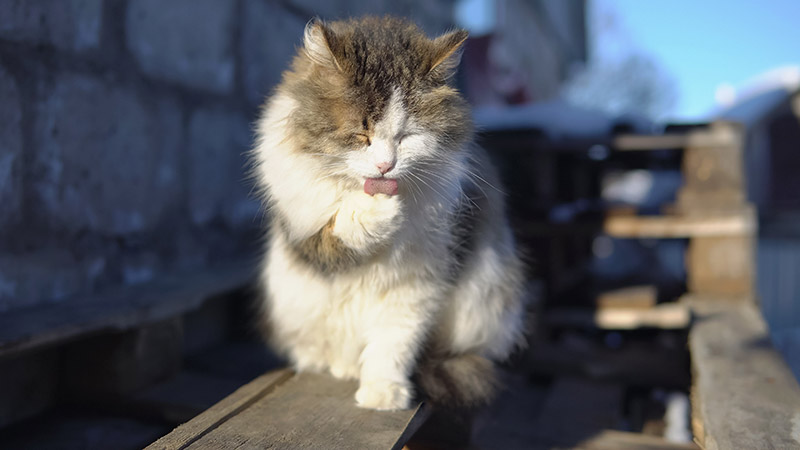Blog
A Kitty Conundrum: Feline Hyperthyroidism

The endocrine system is an often overlooked, but very important, organ system in our bodies. Responsible for all things hormone, havoc can ensue when this organ system isn’t working properly.
In cats, the most common endocrine disease is dysfunction of the thyroid gland. Feline hyperthyroidism refers to an overactive thyroid gland, a problem that we diagnose and treat often at Ten West Bird and Animal Hospital.
The Thyroid Gland Gone Rogue
The thyroid gland is a two-part gland that is located in the neck. It is responsible for producing thyroid hormone, which helps to regulate the body’s metabolism. When it produces too much hormone due to tumor development or a lapse in the body’s feedback mechanism, this is known as hyperthyroidism.
Feline hyperthyroidism most often affects middle-aged to older cats, with the average age of those diagnosed being 13 years. It can affect the entire body, resulting in variable symptoms. Most commonly, though, we see:
- Weight loss
- Increased hunger
- Restlessness/agitation
- A grumpy personality
- Dull haircoat
- Increased heart rate
- Increased thirst/urination
- Vomiting and/or diarrhea
Because hyperthyroidism results in the unchecked increase in metabolism, most affected cats experience dramatic weight loss while still eating well.
Untreated, feline hyperthyroidism can result in extreme and dangerous weight loss as well as complications such as high blood pressure, heart arrhythmias, and vision loss.
Diagnosing and Treating Feline Hyperthyroidism
Feline hyperthyroidism is typically easy to diagnose. While other disease condition such as diabetes mellitus may appear similarly, blood testing for circulating thyroid hormone often confirms the diagnosis quickly.
Once hyperthyroidism is diagnosed, it is important to treat the condition. Three primary options exist.
Anti-thyroid treatments — Lifelong treatment with antithyroid medications such as methimazole (can be given as a pil, liquid, or transdermal lotion) or a iodine restricted diet can be effective. Sometimes,however, they lose efficacy over time.
Surgical removal — The thyroid glands can be surgically removed, however this can result in hypothyroidism (low thyroid hormone) which may require medication. Complications can also ensue from the removal of the parathyroid gland which regulates calcium balance in the body.
Radioactive iodine treatment — Many cats respond well to treatment with radioactive iodine. The isotope I131 is injected intravenously and effectively targets the thyroid tissue, rendering the abnormal tissue inactivated. While this can be extremely effective, it does require hospitalization and isolation. until the patient is no longer considered radioactive.
Feline hyperthyroidism is an extremely common diagnosis in our older cat patients, but thankfully it is one that we can typically manage well. As with most diseases, the earlier it is diagnosed and treated, the better the patient tends to fare. This makes it extremely important to bring your senior pet in for routine wellness exams and blood screenings as well as to call us right away if you suspect a problem. We are here to help.
